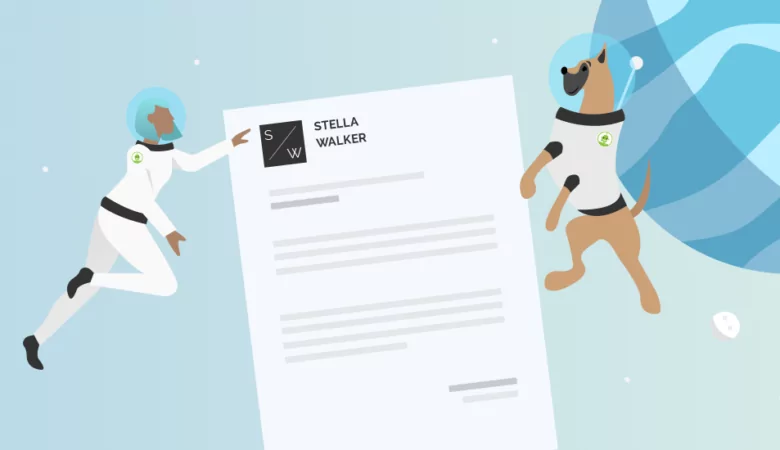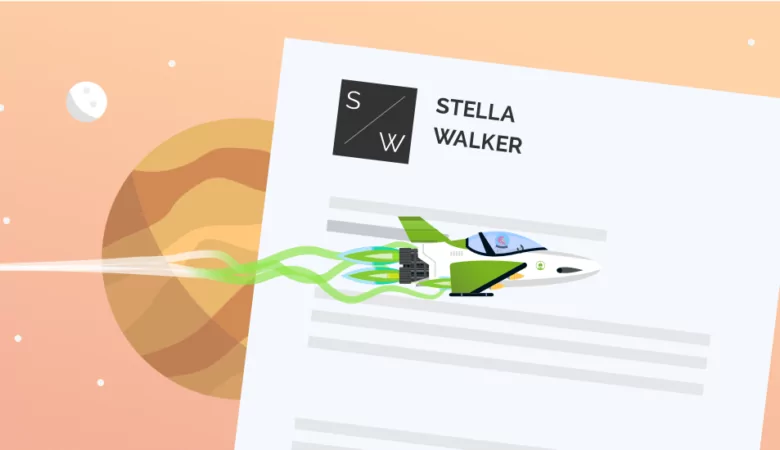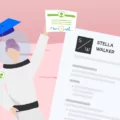Proper cover letter spacing improves the overall look of your professional cover letter. Here are the important elements you need to know about cover letter spacing.

How to Implement Professional Cover Letter Spacing
Cover Letter Spacing
When you write a business letter, including a cover letter for any job application, there are several points you need to keep in mind. As well as ensuring that you address the job description and make a case for why you’re the best fit for the job in question, you need to format your cover letter well. While formatting issues like line spacing may seem minor, they have a big impact on the first impression that your job application makes. This article will tell you what you need to know about cover letter spacing.

What Is Cover Letter Spacing and Why Does it Matter?
Cover letter spacing can refer to two things. Firstly, it can refer to how you space out the content of your cover letter to ensure readability and flow. Secondly, it can refer to the actual spacing between the lines of content in your cover letter. The right spacing will create a professional appearance and ensure that your cover letter makes a great first impression on recruiters, increasing the chance that your job search will be successful.
How To Implement Proper Cover Letter Spacing [Top to Bottom]
If you are ready to start writing your cover letter, it’s beneficial to consider appropriate cover letter examples to ensure that your content stands out. Thankfully, cover letter spacing can be broken down into a reliable formula. To properly space your cover letter, skip a line to create a single space between each section below:
1. Header containing your full name and contact information, including your address, phone number, and email address. Skip a line between each piece of information, for example:
[name]
[address]
[phone number]
[email address or secondary phone number]
2. Date
3. Hiring manager’s address. If you can’t find it, use the general company address.
4. Salutation. Your salutation should be as personal as possible. For example, “Dear Mr./Dear Mrs. X” is preferable to “Dear Hiring Manager” or “To Whom It May Concern.”
5. An introductory paragraph that has a great hook. This first paragraph should give the recruiter an idea of who you are and what makes you right for the role. This paragraph should make a hiring manager want to read more.
6. Second paragraph (or middle paragraph). In your body paragraphs, you should expand upon the information in your first paragraph and give additional details. For example, single out specific professional achievements, certifications, or awards that match what the job needs. You can present specific information using bullet points.
7. Final paragraph. Your final or closing paragraph should include a call to action and encourage a hiring manager to initiate follow-up contact to arrange a job interview.
8. Sign off. A professional closing with something like “Yours sincerely” or “Warm regards.”
9. Your full name.
If you wish to add your signature, skip three lines and sign the document before adding your full name on the bottom; this can be especially useful if you are handing in a job application personally. If you are creating an email cover letter, you will also need to account for your subject line. This should be something simple like, “Jane Doe, [Job Title], Cover Letter.”
More Tips To Help You Properly Format Your Cover Letter
If you want to create the best cover letter possible for your job application, consider these additional formatting tips and hints:
- Use single space or space-and-a-half line spacing as a general rule of thumb. Some professions may prefer double-spaced lines, but this is uncommon as cover letters are supposed to be short documents.
- A cover letter should be no more than a single page in length.
- Margins should be half an inch to one inch all around.
- Do not indent.
- A simple, professional font like Arial, Calibri, or Helvetica is preferable.
- Use 10-point to 12-point font sizing.
If you want to ensure that you meet all formatting requirements, using a professional cover letter template can be very helpful.
FAQ: Cover Letter Spacing
Cover letter spacing is important because a letter with poor spacing between and around content will result in a letter that has a less than professional look. Of course, the content will always be the most important element of your letter, but a clean, streamlined look also helps lead to a positive impression.
The amount of words per line is less important than the overall length of your cover letter. Generally, the ideal cover letter should be between half to three-quarters of a page in length. This will generally be about 250 - 350 words, depending on your font size.
Yes, you can use this spacing to write an effective email cover letter, or any formal business letter, with just a few changes. For example, in an email cover letter, you might want to move your address below your name and title. The ResumeNerd cover letter builder can help you create a high-quality, editable cover letter.







